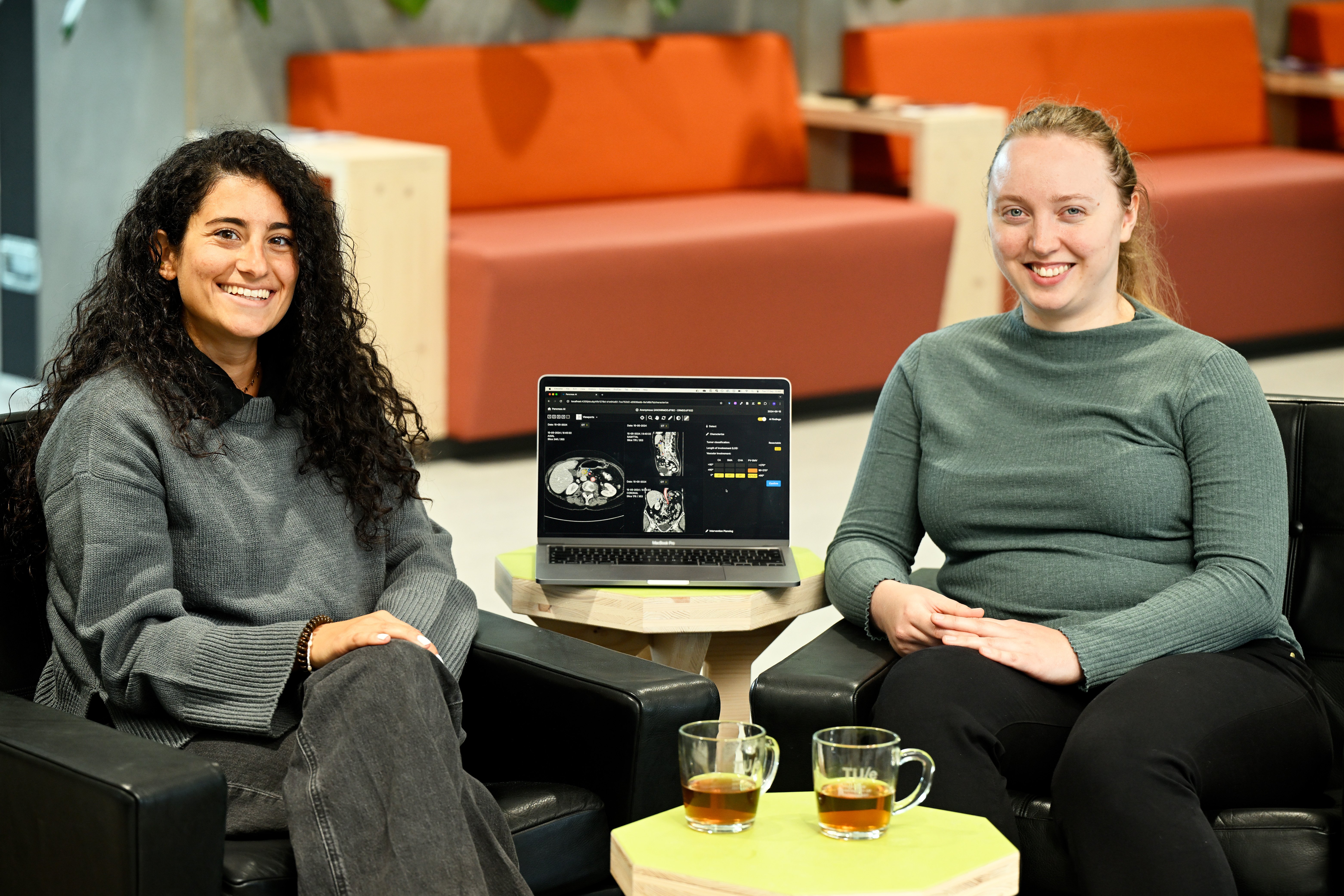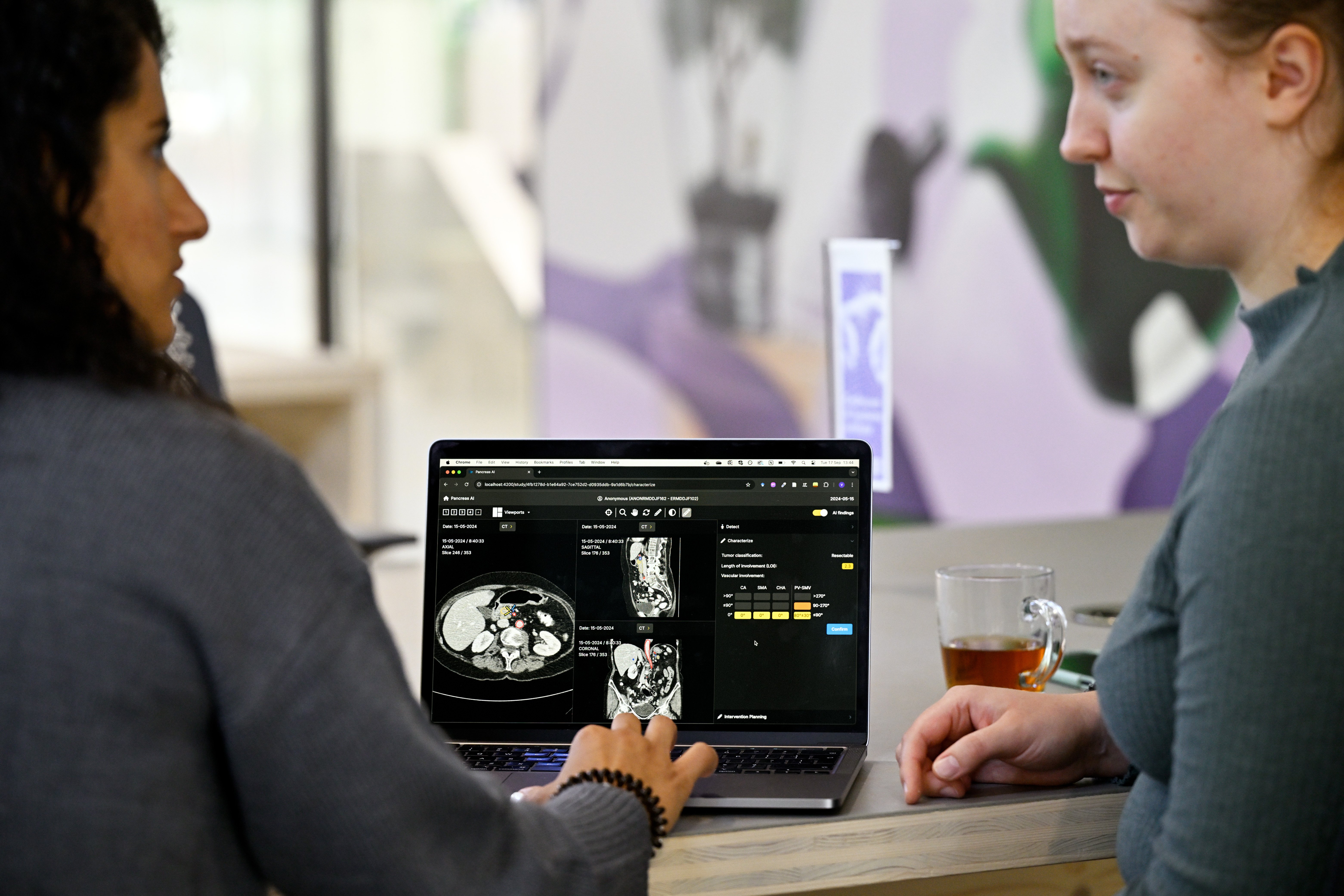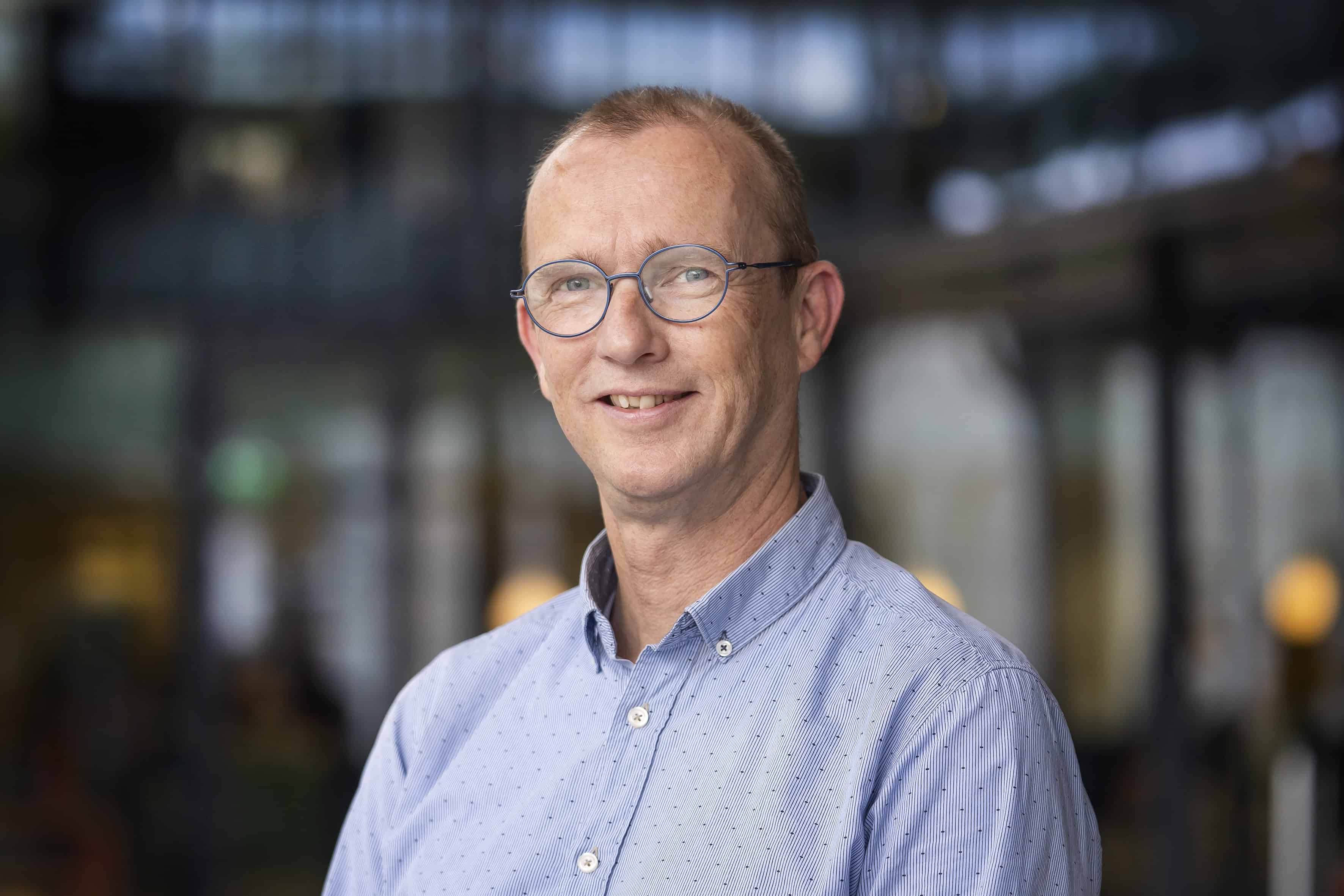
Every year, about 3000 people in the Netherlands are diagnosed with pancreatic cancer. This form of cancer is one of the deadliest. Only about 9% of the patients suffering from pancreatic cancer are still alive five years after the diagnosis. Moreover, detecting the disease is very difficult. Symptoms are vague and often do not appear until the tumor has already grown into surrounding organs or blood vessels. This also complicates the treatment of the disease.
Victoria Bruno, an EngD candidate in Industrial Design, and Terese Hellström, a PhD candidate at TU Eindhoven in Electrical Engineering, are developing artificial intelligence solutions to help doctors detect pancreatic cancer and plan their treatment. The research is supported by the ACACIA project within the Eindhoven Artificial Intelligence Systems Institute (EAISI) and as part of the regional consortium e/MTIC (TU Eindhoven, Catharina Hospital, Máxima Medical Center, Kempenhaeghe Epilepsy and Sleep Center and Philips). Hellström has been working on the project since 2021 and Bruno joined in 2023. They work closely together to integrate the AI model into the prototype being developed within the project.
EAISI celebrates its 5th anniversary, so that’s a perfect moment to highlight one of its biggest projects. Within the ACACIA project, scientists of different departments of TU Eindhoven, doctors of the Catharina Hospital in Eindhoven, and professionals from Philips work together to improve care around cancer and cardiovascular diseases. Detecting pancreatic cancer through AI is part of the whole project. “Ultimately, the goal is to build a modular system in which AI can support doctors in detecting different types of cancer,” Bruno states.
Proper imaging and planning
That still requires a lot of research. Hellström focuses mainly on the development of the AI system. Deep learning models can determine where a tumor is located using CT scan images. It can also assist in assessing the extension of the tumor involvement with, for example, blood vessels and other tissue. This is essential information for planning the treatment; it determines, for instance, whether or not surgery is possible. The surgery becomes riskier the more the tumor grows in healthy blood vessels.
User-friendly
“AI can make a big difference in healthcare, but then the technology has to fit well with the doctors’ work process,” Hellström says. That’s where Bruno’s research comes in. She looks at the tool from a design perspective and, among other things, takes care of dealing with uncertainty appropriately. “We are investigating how to integrate the use of AI into existing processes as well as possible, for example, by displaying data appropriately and understandably,” Bruno continues.
AI can streamline and speed up processes in healthcare
Terese Hellström
This raises numerous design questions. After all, does the physician see the AI’s findings first, or does the clinician have to make their judgments first, and only after consulting the AI findings? Bruno: “We designed the system not to show the algorithm’s findings right away. That way, they can make their judgment first. After that, they can see the AI’s findings at the push of a button.” Hellström clarifies: “AI can streamline and speed up processes in healthcare. The technology is not intended to completely take over the doctor’s work. The technology is there to support so that the physician can spend their time more efficiently.”

Unique collaboration
What makes this project unique, according to the researchers, is the collaboration between academia and the hospital. “Partly because of the e/MTIC partnership, a number of physicians are following the development. They can immediately indicate what works and what doesn’t. That is incredibly important to be able to eventually bring the product to market,” Hellström says.
Implementation in the hospital
Clinical trials using this technology are an important step towards final integration in clinical practice. “The research we are doing now is a small part of the whole. In the end, we can only really make an impact together,” Hellström continues.” within the next year we will perform a clinical trial, which means that the technology will then be tested for the first time on a larger scale at the hospital. Hellström: “Now we are getting feedback from a few doctors, but in order to implement it, obviously more specialists need to use the technology. Then we will get a better picture of the possibilities.” Bruno adds: “So design choices are not fixed yet either. We can still adjust the tool based on the results from the clinical study.”

Trust
Physicians’ trust in the technology is crucial for its implementation. Hellström: “There are now more and more rules for using AI in healthcare. With the rules and associated labels, physicians will know better which tools they can trust. I hope this will lead to technology being used more often, and create more room for innovation.”
In any case, the researchers see that social interest is great. Bruno: “During the EAISI Symposium we received numerous questions from people whose loved ones have been affected by this challenging type of cancer. That always moves me, especially since one of my family members also suffered from this disease. For me, it is not only a scientific project but also a mission to make a difference for patients and their families.”

